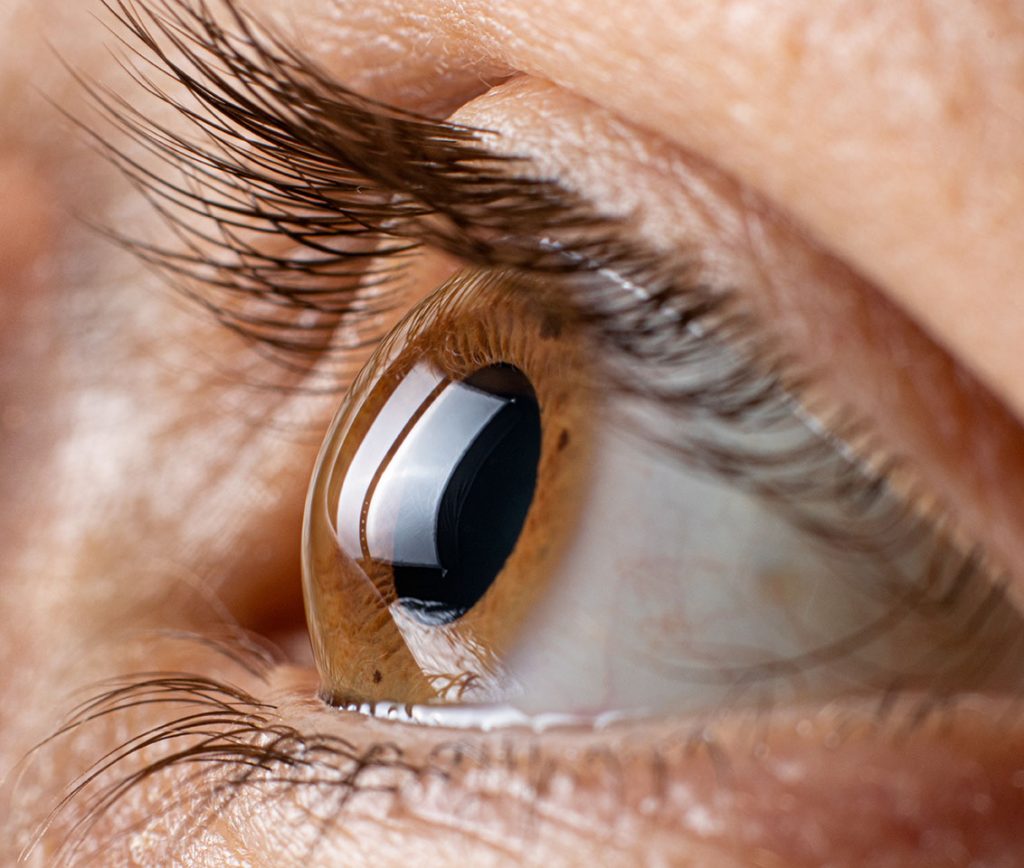Diagnosis and treatment of Keracotone in Fuengirola - Mijas
CHERATOCONUS
DR. SALVADOR NEBRO COBOS
WE SOLVE YOUR DOUBTS AND CONCERNS
952 47 83 42
What is keratoconus?
It is a corneal disease included in the group of corneal ectasias in which, due to thinning of the cornea, its shape changes from oval to conical, which is why the symptoms occur. It usually occurs in both eyes, although unevenly.
Symptoms of keratoconus
It usually begins in adolescence, progressing slowly until middle age, when it usually stops. There is a progressive rise in myopia and astigmatismThe lenses are usually unevenly distributed between the eyes. Continuous changes of spectacles or difficulty in tolerating contact lenses are the reasons why the patient usually comes for consultation.
Diagnosis of keratoconus
It presents some characteristic signs that allow us to identify it in the basic consultation examination, although for a correct classification and follow-up it is necessary to perform a corneal topography.
In our fuengirola ophthalmology clinic we have pentacam topographyThe device is one of the newest and most up-to-date devices for identifying the intensity of keratoconus as mild, moderate or severe depending on the extent of the cornea's involvement.
The topography is the most sensitive method for early diagnosis and follow-up of this eye disease.
Keratoconus treatment in Fuengirola
Glasses
Spectacles to correct mild astigmatism in early stages
Contact lenses
When astigmatism is higher, rigid contact lenses are needed to provide a more regular corneal surface. In our clinic we have a system for adapting the lenses to your needs. scleral contact lenses for keratoconus.
Surgery
Crosslinking
It is a treatment in which the structure of the cornea is changed to make it more resistant to thinning so that the disease does not progress.
Corneal segments
They are implants to improve vision by regulating the curvature of the cornea. of the cornea.
Corneal transplantation
Indicated for patients with advanced disease and corneal scarring
Risk factors
It is frequently found in diseases such as Down syndrome, Marfan, Turner, osteogenesis imperfecta, mitral valve prolapse, and in people with previous ocular pathology.
It is important to note that people with allergies, due to the continuous rubbing of the eye, may have a greater predisposition, so it is advisable to treat the underlying allergy in order to prevent it and to carry out regular check-ups.

These are special, larger lenses which, instead of resting on the cornea, rest on the sclera (the white part of the eye) and are therefore better tolerated.
They serve to improve the irregular surface of the cornea, which gives us better visual quality and, in addition, they provide a space between the contact lens and the cornea, which helps us to keep the eye moist at all times, thus also improving the symptoms of dry eye and the quality of vision.
It is therefore indicated in:
- Corneal ectasia (keratoconus, pellucid marginal degeneration, post-lasik), corneal transplantation.
- Severe dry eye syndrome.
- They are a good option for people who cannot tolerate conventional contact lenses.
Frequently asked questions queracotone
Most patients do not have a positive family history, although offspring may be affected in 10 % so family screening should be performed to rule it out.
It usually appears in adolescence, although it can appear at earlier or later ages, so whenever irregular astigmatism appears, especially if it is asymmetrical, we should suspect it.
Some children rub their eyes because they feel itchy. This continued trauma to the eye can cause keratoconus, so it is very important to try to avoid this habit in our children, as it can have serious consequences.
Let's say that when the cornea thins so much, one of its layers can break. This causes fluid to enter, producing a kind of "waterlogging" of the cornea, which under normal conditions is transparent. This causes decreased vision along with tearing and a foreign body sensation or eye discomfort. It normally heals in 1-2 months, although it can sometimes leave some variable scarring that limits the transparency of the cornea to a certain degree.
Nowadays, thanks to early detection, it is usually treated in its initial stages, improving visual quality with rigid contact lenses, which also tend to slow its progression.
The important thing to avoid ocular complications in which, due to scarring, corneal transparency is reduced and, therefore, vision, is to always carry out a correct follow-up in ophthalmological consultations so that the specialist can indicate the most appropriate treatment for each stage of the disease.

